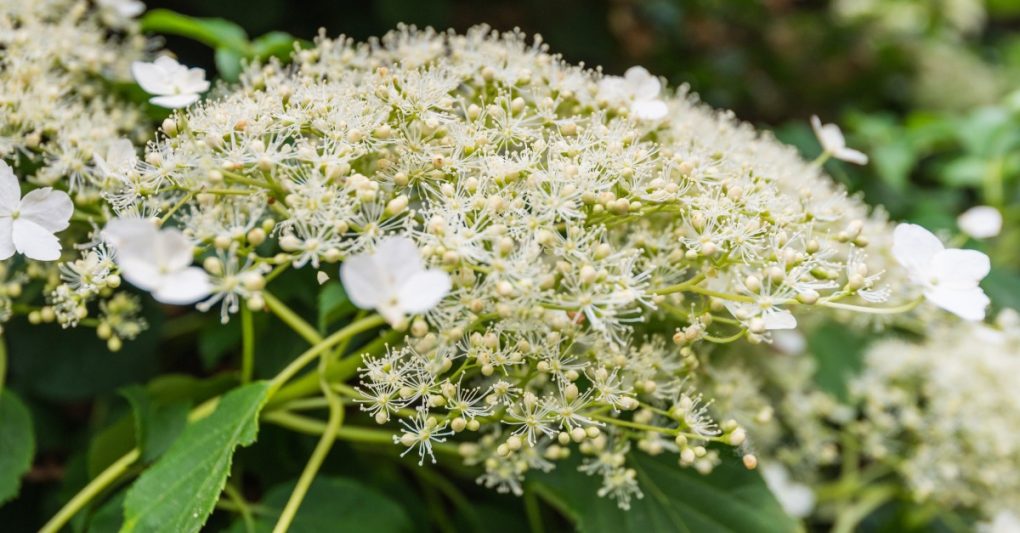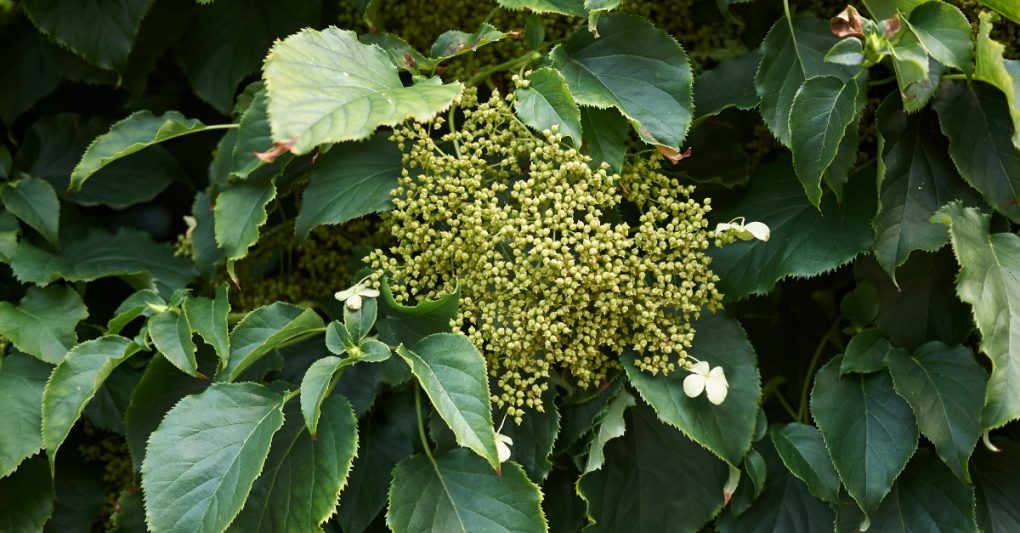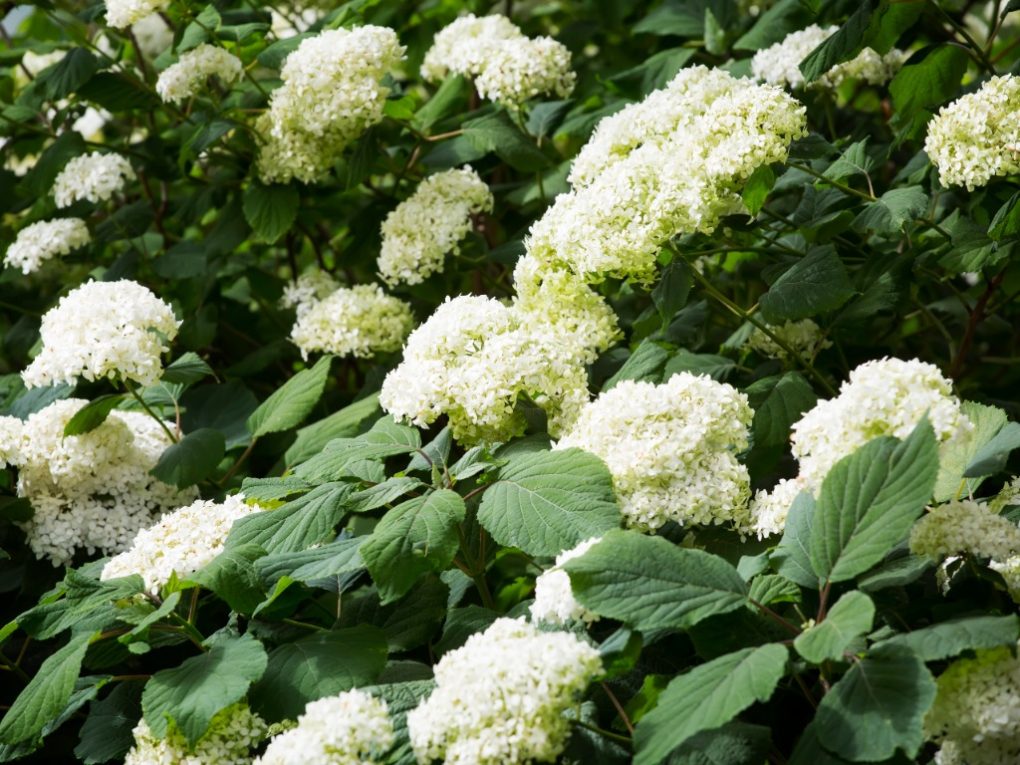Do Climbing Hydrangea Harm Trees? Exploring the Potential Risks.
Climbing hydrangeas (Hydrangea anomala subsp. petiolaris) typically do not harm trees. Instead, these plants are known for their vigorous growth and stunning blooms, such as walls, fences, or trees, when provided sufficient support.

While they attach themselves to surfaces via aerial rootlets, climbing hydrangeas do not extract nourishment from the tree; instead, they derive nutrients from soil through their roots. In most cases, the interaction between the tree and the climbing hydrangea is harmless.
However, it’s worth noting that in some instances, if the hydrangea grows too densely, it can limit the amount of sunlight reaching the tree’s leaves, which can affect the tree’s overall health. Monitor and prune the hydrangea if necessary to ensure the tree’s foliage receives adequate sunlight for best results.
Table of Contents
Signs That Climbing Hydrangea is Killing Your Tree
Climbing hydrangeas are beautiful and relatively harmless climbers that use tiny rootlets to attach themselves to trees, walls, and other surfaces. While they don’t usually harm the surfaces they climb, they can cause problems for the tree they attach to. Here are some signs that climbing hydrangea may be killing your tree:
● The tree’s bark is damaged or missing where the climbing hydrangea is attached. This can lead to infections or diseases that weaken the tree.
● The tree’s branches are being weighed down by the weight of the climbing hydrangea, causing them to bend or break. This can further damage the tree and make it more vulnerable to pests and diseases.
● The climbing hydrangea is growing so thickly around the tree that it’s blocking sunlight and air from reaching its leaves and branches. This can cause the tree to become weaker and more vulnerable to pests and diseases.
If you notice any of these signs, it’s important to take action to protect your tree. You may need to prune back the climbing hydrangea to reduce its weight and allow more light and air to reach the tree. You may also need to remove the climbing hydrangea entirely if it’s causing too much damage to the tree.
It’s important to remember that climbing hydrangea is not inherently harmful to trees but can cause problems if allowed to grow unchecked. By monitoring your tree and taking action when necessary, you can enjoy the beauty of climbing hydrangea without putting your tree at risk.

Preventing Climbing Hydrangea from Killing Your Tree
Climbing hydrangea can be a beautiful addition to any garden, but it can also cause harm to the trees it climbs on if not properly managed. Here are some tips to prevent climbing hydrangea from killing your tree:
1. Choose the Right Tree
When planting climbing hydrangea, choosing the right tree to climb on is important. Avoid weak or sickly trees, as the added weight of the vine can cause them to collapse. Instead, choose a healthy, sturdy tree that can support the vine’s weight.
2. Manage the Growth
Climbing hydrangea can grow quickly and aggressively, smothering the tree it’s climbing on. To prevent this, regularly prune the vine to keep it in check. Remove any dead or damaged branches, and trim back the vine to prevent it from overtaking the tree.
3. Provide Adequate Support
Ensure the tree can support the weight of the climbing hydrangea by providing adequate support. Use a sturdy trellis or other structure to support the vine, and avoid letting it grow too thick or heavy.
4. Monitor for Damage
Regularly inspect the tree for any signs of damage caused by the climbing hydrangea. Look for cracks or splits in the bark, and check for any signs of disease or insect infestation. If you notice any damage, address it immediately to prevent further harm to the tree.
By following these tips, you can enjoy the beauty of climbing hydrangea in your garden without putting your trees at risk.

Removing Climbing Hydrangea from Your Tree
While climbing hydrangeas can add a beautiful touch to your trees, they can also cause damage if left unchecked. For example, if you need to remove your climbing hydrangea from your tree, you can take a few steps to do so safely.
The first step is to carefully cut the stem of the hydrangea as close to the tree as possible. Use a small saw to cut if the stem is too thick to cut with pruning shears. Wear gloves and eye protection to protect yourself from any falling debris.
Once the stem is cut, you can remove the climbing hydrangea from your tree. Start at the bottom of the stem and gently pull the vine away from the trunk. If the vine is tangled, use scissors or gardening shears to carefully cut away any tangled sections.
After the vine has been removed, inspect the tree for any damage. If there are any wounds or cuts on the tree, apply a tree wound dressing to help the tree heal. It’s also a good idea to water the tree thoroughly to help it recover from any stress caused by the vine removal.
It’s important to note that if the climbing hydrangea has been on the tree for a long time, it may have caused damage to the bark or branches. In this case, it’s best to consult a professional arborist to assess the damage and determine the best action.
